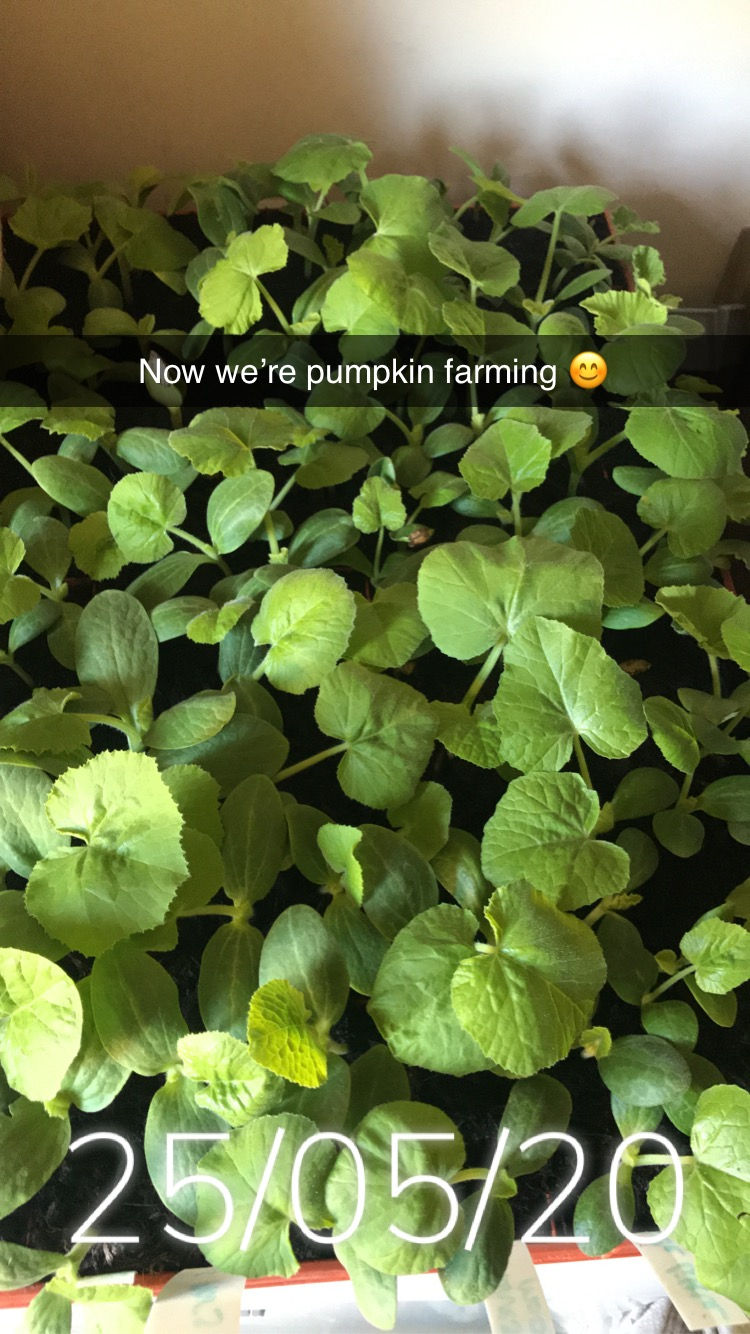No.6 Now we're pumpkin farming
- Farmer Powell
- Jul 23, 2020
- 4 min read
What a difference a couple of weeks makes. These incredible little seeds have pushed their way up and sprouted about 4 leaves each in just a few weeks, they were looking strong and healthy - I was soo proud. Granted a few didn't germinate but the trays were looking full and I was over the moon. Even to a complete novice, that's me, they look good strong healthy plants with nice green leaves. Result :)

Whilst I was busy trying to grow pumpkin plants in the house, the "real" farmer Powell had been busy preparing the seed bed as lambing had eased and we were all getting sleep again. After soil sampling the field. The Pumpkin Patch was given a dressing of nutrient rich manure and some lime to help increase the pH for optimum growing conditions. The patch was ploughed, power harrowed and rolled until the optimum seed bed was achieved. Finally we were ready to plant the pumpkins out. All we needed was a spot of good weather to give them the kick start they required.

On 28th May, a glorious sunny day we set out to plant the pumpkins. With the tools loaded up in the trailer and the trays of pumpkin plants transported in the back we set off on a mission.
First of all we had to decide where to put them in the field, due to Covid 19 we had scaled back the number of pumpkins we were planting in this first year so it wasn't going to be the whole patch anymore :(. It seemed sensible to plant them at the bottom of the patch which is also the flattest part of the field. First of all a bit of raking was required as there were a few clods left at the bottom of the patch. Then we needed a way of creating the rows as we were hand planting them so no fancy GPS to make sure we end up with evenly spaced straight lines. Out with the baler twine (of course!) when in doubt there's always a piece of twine for the occasion. We tied long lengths together from one end of the patch to the other and fixed it in place with electric fencing stakes - ideal a line to follow and we used the electric fencing stakes to measure between plants and between rows giving each plant 90cm square. Off we went.

I was in charge of spacing and digging the holes with my garden trowel, the children were taking it in turns to fill the hole with water and put slug pellets around the plants and the "real" Farmer Powell was putting the plants in and covering them over. At the beginning there was a grand plan of where I wanted the plants to go based on the 9 different varieties and then I wanted the seeds for those varieties to go in the same rows - this soon started to go out the window as the plant markers got mixed up and no one could tell me which variety were where! It wasn't the end of the world and they all ended up somewhere near it just took a bit of figuring out the following day.

With the plants in it was time for a picnic tea on the Castle Mound which is adjacent to the pumpkin patch - views for miles and the perfect spot to take a breather. Then we were ready to sow the remaining seeds. This is so we could compare the how the seeds fare verses the plants which had a head start in the seed trays. Could we just drill the seeds next year at the end of May or do we need to grow them in trays because of where we are in Radnorshire at a higher altitude and more adverse climate than most pumpkin growers? It was a lot easier to sow the seeds as we only had to poke a hole in the ground and pop the seed in, cover over. No great science behind it at the time. Again in hindsight perhaps there are some things we could have done differently to help improve the germination rates on this scale.
At 10pm, and one giant blister later, we finally had all of the plants and seeds in - what a relief, now all we needed them to do was grow. I had everything crossed. The days which followed were exceptionally hot so I decided it would be sensible to get out to the patch with the water can two days after planting as the last thing we wanted was for them to wilt and die. Once the sun had gone in, I made a little well around each plant and watered them. This was no small task. I have made a note for next year to find out how others water their pumpkins when on a field scale. Luckily there was a break in the weather and they had rain a few days later and they have not looked back. We only lost three pumpkin plants after planting out and that was due to damage during planting or the stress of it. What a learning curve! But what a journey it is already and one which I am lucky enough to be sharing with all of our family due to Covid 19 and the children being at home from nursery and school. I hope they will always remember the first year we hand planted the pumpkin patch altogether one sunny May day.




Comments